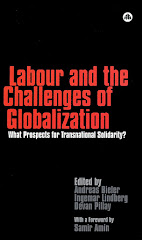 As a result of austerity policies in response to the global financial
market and Eurozone sovereign debt crises, policies of wage cuts and
dismantling or hollowing out of collective bargaining have been implemented
across the European Union (EU). And yet, as a new wage
map by the European Trade Union
Institute (ETUI) illustrates, the general situation of European people has
not improved.
As a result of austerity policies in response to the global financial
market and Eurozone sovereign debt crises, policies of wage cuts and
dismantling or hollowing out of collective bargaining have been implemented
across the European Union (EU). And yet, as a new wage
map by the European Trade Union
Institute (ETUI) illustrates, the general situation of European people has
not improved. Wednesday 28 August 2013
Austerity policies in Europe: crisis response or class warfare?
 As a result of austerity policies in response to the global financial
market and Eurozone sovereign debt crises, policies of wage cuts and
dismantling or hollowing out of collective bargaining have been implemented
across the European Union (EU). And yet, as a new wage
map by the European Trade Union
Institute (ETUI) illustrates, the general situation of European people has
not improved.
As a result of austerity policies in response to the global financial
market and Eurozone sovereign debt crises, policies of wage cuts and
dismantling or hollowing out of collective bargaining have been implemented
across the European Union (EU). And yet, as a new wage
map by the European Trade Union
Institute (ETUI) illustrates, the general situation of European people has
not improved. Friday 23 August 2013
There Is An Alternative: reflections on elements of an anti-austerity economic policy.
 |
| Poster by freestylee |
Importantly, however, politics is always
about choices and deciding on priorities. There are always several possible
ways forward. In this post, I will reflect on some elements of an alternative,
anti-austerity economic policy.
Sunday 18 August 2013
The Age of Austerity: Fighting Cuts and Privatisation.
Since
coming to power in 2010, the current coalition government in the UK has
implemented drastic austerity policies across the public sector. During the
Spring semester 2013, the local University and College Union (UCU) association
at Nottingham University organised a series of talks on local anti-cuts
initiatives. The purpose of this post is to bring together the various reports
from these talks.
 |
| Photo by Dean Thorpe |
(1)
austerity policies have nothing to do with cutting back national debt. Rather,
they are intended to open up the public sector to private investment;
(2)
downward pressure on terms and conditions of those working in the public sector is the general result;
(3)
austerity policies are mainly directed against the weak and vulnerable in
society;
(4)
austerity policies are decided by those, who will not be negatively affected by
them. Cuts in education and health have no implications for the rich, who are
already accessing private education and health services; and
(5)
many current policies had already been initiated by previous New Labour
governments. Turning austerity around will, therefore, need to go beyond
defeating the current government. It also requires an internal struggle for the
direction of the Labour party.
Overall,
austerity is a class project against working people’s gains since 1945!
The
reports collected in this post highlight the dramatic implications of cuts, but
they are also a testimony to the continuation of resistance and the possibility
that austerity can be defeated.
Subscribe to:
Posts (Atom)











